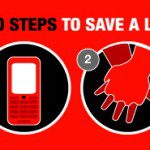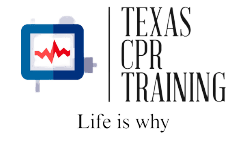Here are the steps for how to do CPR

Hands Only CPR – 2 steps that’s ALL!
How to do CPR using the Hands-Only CPR method or CPR without mouth-to-mouth breaths. It is recommended for use by people who see a teen or adult suddenly collapse in an “out-of-hospital” setting (such as at home, at work or in a park). It consists of two easy steps:
- Call 9-1-1 (or send someone to do that).
- Push hard and fast in the center of the chest.
When you call 911, you need to stay on the phone until the 911 dispatcher (operator) tells you to hang up. The dispatcher will ask you about the emergency. They will also ask for details like your location. It is important to be specific, especially if you’re calling from a mobile phone as that is not associated with a fixed location or address. Remember that answering the dispatcher’s questions will not delay the arrival of help.
2015 HANDS-ONLY CPR FACTS WHY LEARN HANDS-ONLY CPR?
Cardiac arrest – an electrical malfunction in the heart that causes an irregular heartbeat (arrhythmia) and disrupts the flow of blood to the brain, lungs and other organs – is a leading cause of death. Each year, over 326,000 out-of-hospital cardiac arrests occur in the United States.
When a person has a cardiac arrest, survival depends on immediately getting CPR from someone nearby.
According to the American Heart Association, 90 percent of people who suffer out-of-hospital cardiac arrests die. CPR, especially if performed immediately, can double or triple a cardiac arrest victim’s chance of survival.
Most Americans (70 percent) feel helpless to act during a cardiac emergency because they don’t know how to administer CPR or they’re afraid of hurting the victim.
BE THE DIFFERENCE FOR SOMEONE YOU LOVE
- If you are called on to give CPR in an emergency, you will most likely be trying to save the life of someone you love: a child, a spouse, a parent or a friend.
- 70 percent of out-of-hospital cardiac arrests happen in homes and residential settings.
- Unfortunately, only about 39% of people who experience an out-of-hospital cardiac arrest get the immediate help that they need before professional help arrives.
- Hands-Only CPR has been shown to be as effective as conventional CPR for cardiac arrest at home, at work or in public. It can double or even triple a victim’s chance of survival.
Music and Learning How To Do CPR Can Save Lives
Hands-Only CPR has just two easy steps: If you see a teen or adult suddenly collapse, (1) Call 9-1-1; and (2) Push hard and fast in the center of the chest to the beat of the disco song “Stayin’ Alive.”
- People feel more confident performing Hands-Only CPR and are more likely to remember the correct rate when trained to the beat of a familiar song.
- During CPR, you should push on the chest at a rate of at least 100 compressions per minute. The beat of “Stayin’ Alive” is a perfect match for this.
NOTE: The AHA still recommends CPR with compressions and breaths for infants and children and victims of drowning, drug overdose, or people who collapse due to breathing problems.
Anyone can learn how to do CPR – and everyone should! Sadly, 70 percent of Americans may feel helpless to act during a cardiac emergency because they either do not know how to administer CPR or their training has significantly lapsed. This alarming statistic could hit close to home, because home is exactly where 88 percent of cardiac arrests occur. Put very simply: The life you save with CPR is mostly likely to be someone you love.
Don’t be afraid; your actions can only help. If you see an unresponsive adult who is not breathing or not breathing normally,call 911 and push hard and fast on the center of the chest.
Why Learn How to do CPR?
Cardiac arrests are more common than you think, and they can happen to anyone at any time.
- Nearly 326,000 out-of-hospital sudden cardiac arrests occur annually, and 88 percent of cardiac arrests occur at home.
- Many victims appear healthy with no known heart disease or other risk factors.
- Sudden cardiac arrest is not the same as a heart attack.
- Sudden cardiac arrest occurs when electrical impulses in the heart become rapid or chaotic, which causes the heart to suddenly stop beating.
- A heart attack occurs when the blood supply to part of the heart muscle is blocked. A heart attack may cause cardiac arrest.
Who Can You Save a Life With CPR?
The life you save with CPR is mostly likely to be a loved one.
- Four out of five cardiac arrests happen at home.
- Statistically speaking, if called on to administer CPR in an emergency, the life you save is likely to be someone at home: a child, a spouse, a parent or a friend.
- African-Americans are almost twice as likely to experience cardiac arrest at home, work or in another public location than Caucasians, and their survival rates are twice as poor as for Caucasians.
Why Take Action?
- Failure to act in a cardiac emergency can lead to unnecessary deaths.
- Effective bystander CPR provided immediately after sudden cardiac arrest can double or triple a victim’s chance of survival, but only 32 percent of cardiac arrest victims get CPR from a bystander.
- Sadly, less than eight percent of people who suffer cardiac arrest outside the hospital survive.
- The American Heart Association trains more than 12 million people in CPR annually, to equip Americans with the skills they need to perform bystander CPR.
